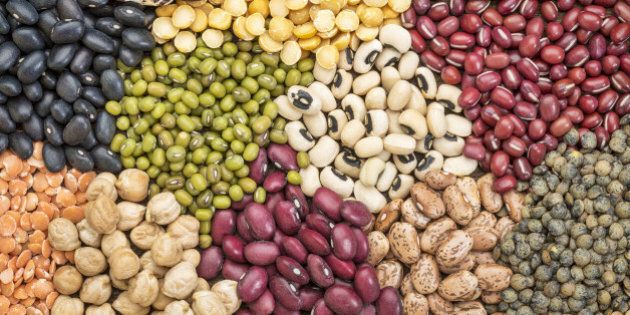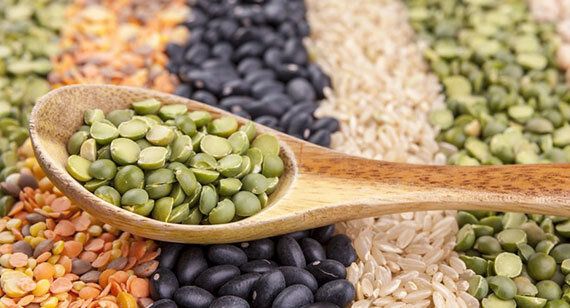
By Alexis Dobranowski, a Communications Advisor at Sunnybrook Health Sciences Centre.
I've been hearing and reading a lot lately about "pulses" -- another name for legumes: dried beans, peas, lentils and chickpeas. Some foodies are calling this group the latest "superfood". The United Nations has even declared 2016 the Year of the Pulse.
Curious if legumes really are all the rage when it comes to healthy eating, I spoke to Daphna Steinberg, registered dietitian, and as it turns out, a legume fan!
"Legumes make a great, low-fat meat alternative," Daphna said. "We know that consumption of red meat has been found to be a risk factor for cancer and heart disease, and so we shouldn't eat too much of it."

photo credit: istock
A few more legume pros:
Legumes are high in fibre. Meat is not.
Fibre helps lower cholesterol, which is helpful in the prevention of heart disease. Fibre also helps us have regular bowel movements, and helps control blood sugar levels and blood pressure, and keeps you feeling full for longer.
They also contain protein, B vitamins and iron.
According to Eat Right Ontario,
- Protein is an essential nutrient to keep your body functioning well. Proteins are needed to build and repair muscle, tissue, skin, nails and hair.
- B vitamins are vitamins that help our body use fat, carbohydrates, and protein for fuel.
- Iron, a mineral, is needed to make blood in your body. Iron comes in two forms, called heme and non-heme iron. Non-heme iron, which is found in plant foods like beans and lentils, is absorbed best when consumed with vitamin C rich foods like bell peppers, tomatoes, strawberries and citrus fruits.
Legumes also have a lower glycemic index than many other carbohydrates so they won't spike blood sugars.
And so, how can we add these little power-packed beans and peas into our routine? They can take the place of meat at a meal, or be added to other dishes to give them a boost.
Need inspiration?
Daphna suggests adding beans, peas, chickpeas or lentils to soups, stews, chili (for example, this chipotle three-bean chili), pasta or salad.
Try chickpea curry, with lots of veggies, sweet potatoes, coconut milk, and curry paste and spices.
How about a light orzo pasta dressed with sautéed chickpeas, garlic, veggies and herbs in olive oil?
Need a new side dish? How about a mixed bean salad?
Tip: Soak dried legumes overnight (according to package directions). If using canned goods, choose low sodium options. Always rinse legumes, whether canned or dried.
February is Heart Month.
Let's show our hearts a little love. Do something healthy for your heart. Eat a legume!
Why it matters
- Each year more than 350,000 Canadians are hospitalized for heart disease or stroke
- Up to 80 per cent of premature heart disease and stroke is preventable by adopting healthy behaviours
- Nine in ten Canadians have at least one risk factor for heart disease and stroke
Source: Heart & Stroke Foundation
More heart health resources

Read more heart health tips and information from Sunnybrook experts at health.sunnybrook.ca